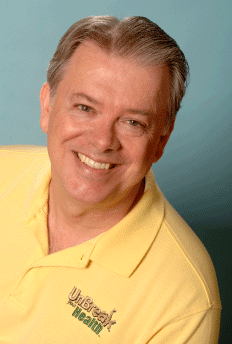Recently the media had a wonderful feel-good story about how the life expectancy in the U.S. has increased according to preliminary government figures from 78 years in 2008 to 78.2 years today. They were practically gleeful in their proclamation that a child born today can expect to live longer than ever in U.S. history.
But they weren't telling the whole truth, as usual. I could not find a media story that included the fact that our ranking in the world for longevity continues to fall. While our longevity rate has improved the rest of the world is improving even more and faster. It used to be the U.S. ranked #38 for longevity but according to the CIA's World Fact Book the current estimate would put us at #51, behind Taiwan and ahead of Bahrain. By comparison #1 Monaco has a life expectancy of 89.73 years.
As long as we're on the subject of living longer, did you know that 29% of our population 0r 65.7 people today are caregivers? That number is expected to continue to grow as our population ages. Caregivers spend around $5,500 out of their own pockets every year and out-of-state caregivers will spend even more, about $8,700. Those are serious numbers and the reason many people worry about the impact it will have on their own retirement. Planning for the future was never more important.
Thursday, March 24, 2011
Sunday, March 13, 2011
The China Study Podcast
You've probably already heard about an amazing book called The China Study. It's one of the most important books ever written about nutrition and health. It's the culmination of a 20-year partnership between Cornell University, Oxford University and the Chinese Academy of Preventive Medicine. Written by T. Colin Campbell, PhD. along with his youngest son Tom, it shows how cancer, heart disease, diabetes and many other health problems are caused by diet. Even former President Clinton has been on national TV saying how this book has improved his health and helped him lose weight.
Dr. Campbell has been at the bleeding edge of nutritional research for more than 40 years and is current Professor Emeritus of Nutritional Biochemistry at Cornell University. He as authored more than 300 research papers. Listening to him explain his research and the current state of health in America will open your eyes to a new world of better health.
Check out this free, 22-minute interview, the 74th program on UnBreak Your Health.
Dr. Campbell has been at the bleeding edge of nutritional research for more than 40 years and is current Professor Emeritus of Nutritional Biochemistry at Cornell University. He as authored more than 300 research papers. Listening to him explain his research and the current state of health in America will open your eyes to a new world of better health.
Check out this free, 22-minute interview, the 74th program on UnBreak Your Health.
Tuesday, March 8, 2011
Medicine for People or for Profit?
If you were one of the 800,000 people each year who suffer a stroke and one of the 2/3 who have trouble walking ... which would you rather do: Have someone come to your home and work with you to improve your walking or go to a physical therapy facility and work with a state-of-the-art treadmill or other bit of technology? Turns out working with someone at home is just as effective.
The largest study ever on stroke rehabilitation was led by Duke University researchers. Their findings were presented recently at a recent American Stroke Association conference.
While high-tech equipment is popular with hospitals, and very expensive, it doesn't necessarily provide any better results. More important, fewer patients dropped out of the home therapy, just 3% vs. 13% for equipment programs. Fancy equipment usually takes 2 or 3 therapists to work with a patient while the at-home therapy requires just 1.
Just one more example showing us that medicine has become big business (nearly 17% of America's GDP) instead of focusing on what's good for patients.
The largest study ever on stroke rehabilitation was led by Duke University researchers. Their findings were presented recently at a recent American Stroke Association conference.
While high-tech equipment is popular with hospitals, and very expensive, it doesn't necessarily provide any better results. More important, fewer patients dropped out of the home therapy, just 3% vs. 13% for equipment programs. Fancy equipment usually takes 2 or 3 therapists to work with a patient while the at-home therapy requires just 1.
Just one more example showing us that medicine has become big business (nearly 17% of America's GDP) instead of focusing on what's good for patients.
Subscribe to:
Comments (Atom)




